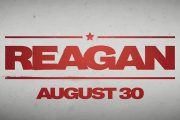
If you are hoping to see a credible cinematic portrayal of a corrupt U.S. senator, intoxicated with power, privilege, and prestige, who leaves a girl to die and then swings into damage-control mode to rescue his own political career, this movie will not disappoint.
No normal-length movie could possibly cover the complexities of the event in the summer of 1969, known simply as “Chappaquiddick,” after the island off the coast of Massachusetts, where Senator Edward Kennedy’s presidential ambitions vanished after he left a young woman, Mary Jo Kopechne, to die in his submerged Oldsmobile in a tidal pond. Yet, this film, through the expert cinematic efforts of director John Curran and screenwriters Taylor Allen and Andrew Logan, comes as close as one can expect from a movie attempting to explain an event that is still shrouded in some mystery.
What is known ultimately kept Ted Kennedy from having a reasonable chance of being elected president, and the film covers the known quite well. It opens with Kennedy, played in a sterling performance by Jason Clarke, walking back to the cottage where he and five other men (all but one married, without their wives) were having a party — referred to as a “cookout” — with six single young women. But on his return to the party, he has left behind Mary Jo Kopechne, the woman who departed with him.
Mary Jo (played by Kate Mara), who had been a important person in Robert Kennedy’s 1968 presidential campaign, is given her due as a more-than-competent political operative. The movie shows a lot of drinking by most of the guests at the cookout, especially Ted Kennedy. Kennedy and Mary Jo are shown talking at the party, but little is revealed about the tone of their conversation, or even what was said. When the two of them leave the party together, it is left to the viewer’s imagination as to what prompted them to leave early.
Kennedy later said that she had requested he take her to the ferry, which was the way that cars and people could travel back and forth across the channel from Chappaquiddick Island to Edgartown on Martha’s Vineyard. But as the movie makes clear, and known evidence proves, they did not go to the ferry. Instead the movie shows the two spending quite some time alone talking, with Ted confiding in Mary Jo that he was pressured to take his brother’s place as a presidential candidate when Bobby was murdered in the summer of 1968.
In the movie, Deputy Sheriff Christopher Look is portrayed as part of the Edgartown police force (but he was actually part of the sheriff’s department and later served as county sheriff), but the movie does follow the testimony of Look, who saw Kennedy’s car at about 12:45 a.m. Saturday morning, parked near the intersection of the Ferry Road and Dyke Road, on Cemetery Road. This flatly contradicted Kennedy’s later assertion that his car and Mary Jo were already in the water at that time.
According to Kennedy’s later statement to the police, he simply made a “wrong turn,” off a paved road onto a dirt road (Dyke Road) that would have taken the two to a secluded beach, had Kennedy been able to make it across the Dyke Bridge. (He was the only person in 22 years before that who failed to successfully cross the bridge.) Kennedy, in his famous TV address to the people (read: voters) of Massachusetts, said there was no truth to the stories that he was drunk, or that he and Mary Jo were having an illicit relationship. In contrast, the movie clearly shows Kennedy as too intoxicated to be safely driving, but it leaves it to the viewer to decide whether he and Mary Jo were simply discussing Kennedy’s future political plans during the hour or so after they left the party.
Kennedy claimed that he made it across the channel during the night by impulsively jumping into the water and swimming across, promising to his cousin, Joseph Gargan, and former U.S. Attorney Paul Markham, that he was going to report the accident to the police. But the movie does not even hint at the possibility that this is actually what happened, showing Kennedy and his two friends “borrowing” a rowboat to get Kennedy back across to Edgartown. (A witness later said that he saw three men in a boat crossing the channel about the time the three would have rowed across.) After depositing Kennedy on the Edgartown shore, Gargan and Markham ask Kennedy if he is going to report the accident. Kennedy tells them, “I’ll take care of it,” so the two take the rowboat back across the channel.
Kennedy is shown passing a telephone booth, yet he makes no call to the police. Instead, he calls his father at Hyannis Port, desperately seeking his advice. According to the movie version, Joseph Kennedy (played by Bruce Dern), who had suffered a stroke a few years earlier, and can barely speak, gets out the word “alibi.” Whether this is the true version of events, it is true that Kennedy established that he was in Edgartown outside of his hotel, at about 2:30 a.m., by asking a clerk for the time.
In the movie, Kennedy had intended to claim that Mary Jo was alone, driving his car, while he was across the channel in Edgartown, but Gargan and Markham argue against this effort to escape responsibility for Mary Jo’s death. And the movie clearly leads the viewer to understand that she may not have died, had Kennedy simply called for help from a nearby home. She is shown with her head barely above the water in the submerged car, gasping for air. A skin diver who brought her out of the car the next morning expressed his belief that she could have been saved, had he been called for right after the accident.
In my article on the actual history of the tragedy, which will appear in the May 7 print edition of The New American, I quote the skin diver, John Farrar, saying that Mary Jo could have lived in an air pocket for at least an hour, maybe longer. The undertaker is shown in the movie also arguing that she probably lived for some time in the car.
The movie does an excellent job in dramatizing what must have gone on inside the Kennedy compound during the next week, as several longtime Kennedy political operatives conspire to cover up the truth of Kennedy’s despicable role in causing the unnecessary death of Mary Jo Kopechne. One man who was there, Robert McNamara, who was secretary of defense for Kennedy’s brother, John, and then for Lyndon Johnson, is shown remarking that Chappaquiddick was a bigger mess-up than the Bay of Pigs. Whatever McNamara actually said during the coverup efforts, one could certainly contend that McNamara was well-practiced at misleading the public — having directed America’s military operations in Vietnam.
In the movie, several efforts to save Teddy’s political career were shown to not only be duplicitous, but amateurish — such as Kennedy wearing a neck brace to Mary Jo’s funeral (then turning around to look at people behind him in the church), and claiming that he had suffered a concussion in the accident and that his doctor had prescribed sedatives (despite the fact that this could have killed a person with a severe concussion). In the movie, the group conspiring to save Kennedy even discuss the diagnosis (concussion and shock) that would be put out for public consumption, before Kennedy’s befuddled doctor had even examined him.
Finally, before Kennedy’s TV address, his cousin Joe Gargan tells him, “Moses never left a girl at the bottom of the Red Sea,” when Kennedy wanted to argue even Moses was flawed.
As I said, there is simply too much for a movie to cover, so its makers must be excused for the decision to end the story of the coverup after Kennedy’s TV speech a week after the death of Mary Jo. But, in my forthcoming article, I will examine many other events the movie did not cover, such as the fact that the body of Mary Jo was flown out of the state on a Kennedy-chartered plane, thus avoiding an autopsy, and the obstacles a pro-Kennedy judge placed in the path of a grand jury later convened to dig deeper into the whole sordid mess.
But this movie, which Kennedy actor Jason Clarke said liberal Hollywood did not want made, is an excellent “first course” on the sad story of Chappaquiddick and the untimely death of Mary Jo Kopechne. There is not a dull moment in the fast-paced motion picture.
Photo: Chappaquiddick movie poster detail




